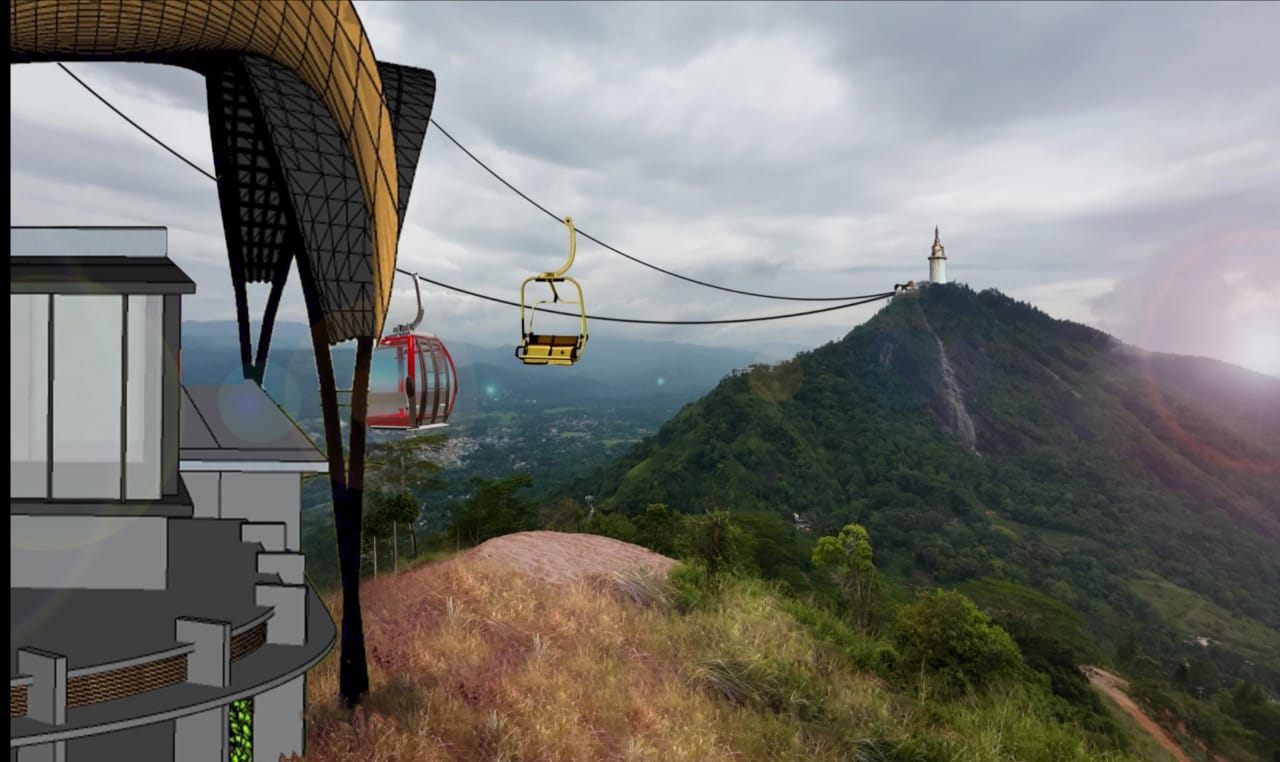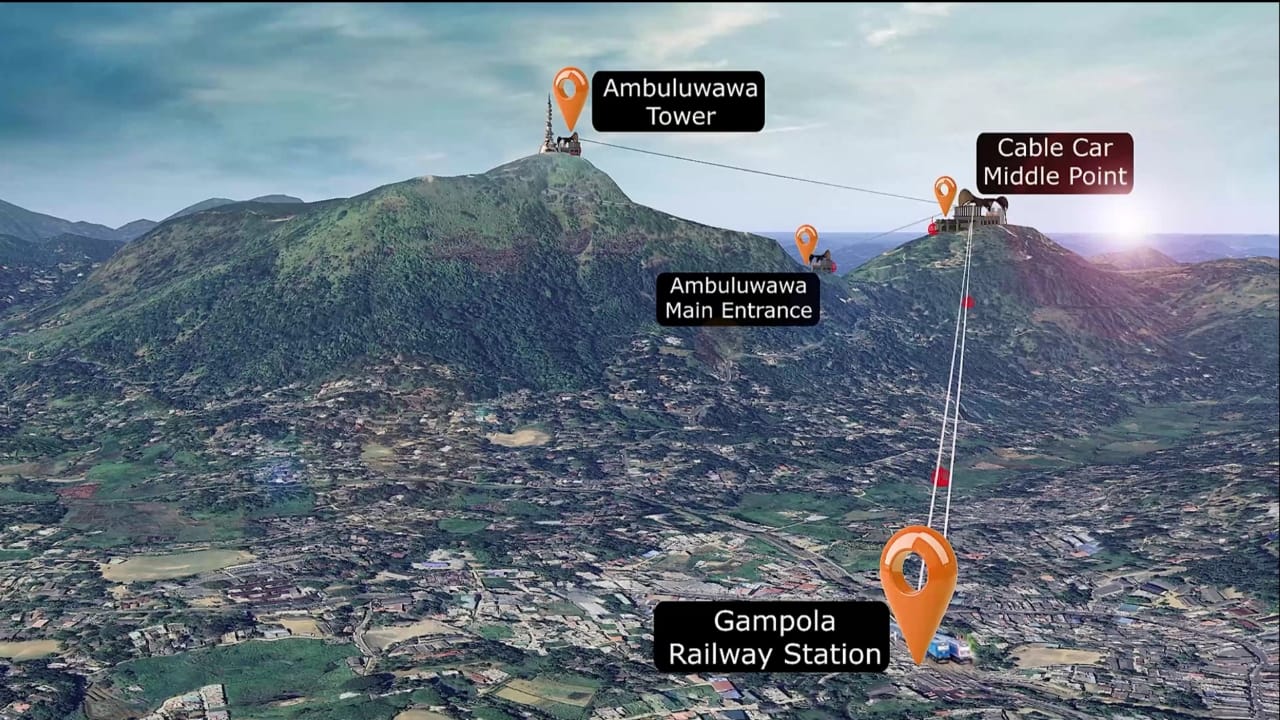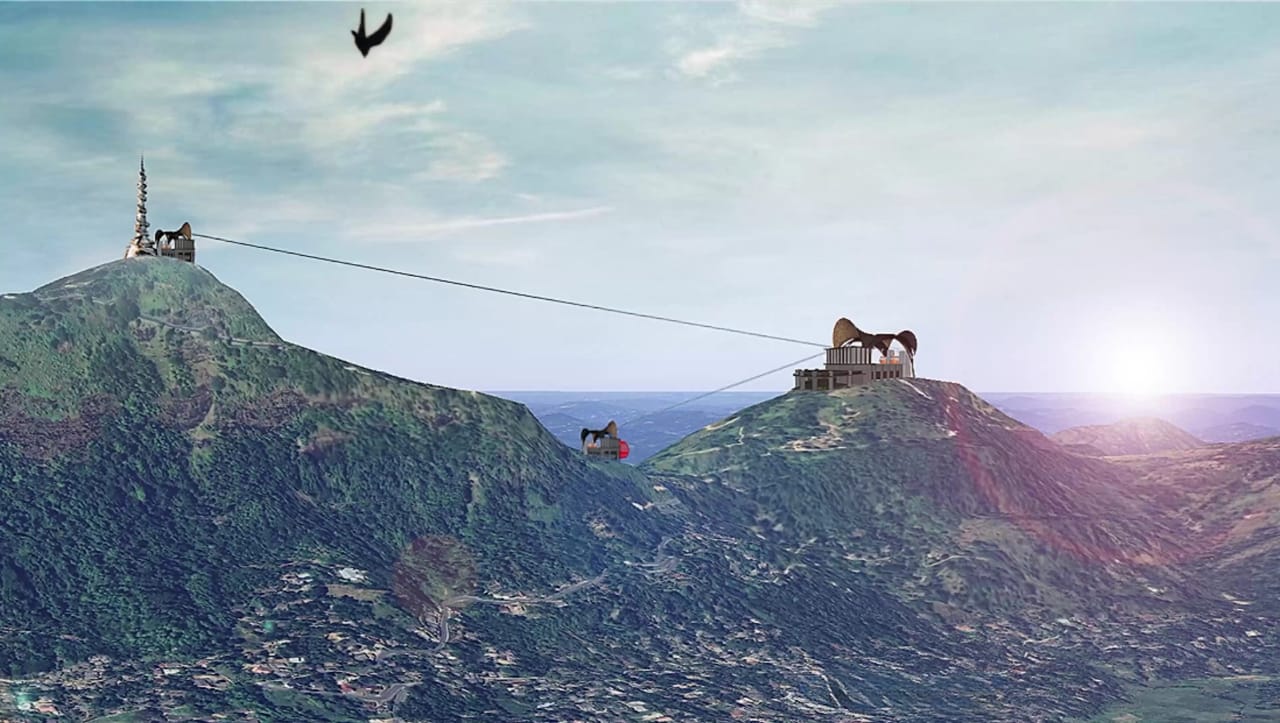Gampola, Sri Lanka — Ambuluwawa Biodiversity Center, one of Sri Lanka’s most rapidly developing tourism landmarks, is preparing to unveil the country’s first-ever cable car system as part of a major tourism and infrastructure expansion. Situated 3,567 feet above sea level in Gampola, Ambuluwawa has long captured public attention for its signature white spiral tower, panoramic hill-country views and symbolic display of religious and cultural coexistence. With the new cable car system nearing completion, the destination is expected to welcome significantly larger numbers of domestic and foreign visitors in the coming months, marking a transformative chapter for Central Province tourism and national tourism development.

The ambitious project is being carried out in two phases at a combined cost of more than LKR 4 billion. The first phase, covering a 1.8-kilometre stretch between Gompola town and the base of the Ambuluwawa complex, is valued at approximately LKR 1.5 billion. Construction is expected to conclude by the end of the year. The second phase, estimated at LKR 2.6 billion, will directly link the Gampola Railway Station with the summit area, offering a seamless travel experience from train platform to mountaintop. The cable car system is designed and implemented exclusively by Sri Lankan engineering talent, highlighting the country’s growing technical capability in modern tourism infrastructure.
The cable car will drastically improve access for travelers who have previously relied on steep road travel or long uphill climbs to reach the top. Authorities emphasize that the initiative aligns with Ambuluwawa’s guiding principles of inclusion and equal access, ensuring that senior citizens, differently-abled individuals and families with young children will be able to enjoy the site comfortably and affordably.

Ambuluwawa was conceptualized by the late D. M. Jayaratne, former Prime Minister of Sri Lanka and a respected political figure from Gampola. Renowned for his lifelong advocacy for farmers and rural development, Jayaratne envisioned Ambuluwawa as a tribute to the country’s biodiversity, cultural harmony and agricultural heritage. The site opened to the public in May 2009 and quickly earned recognition as a symbol of unity and spiritual significance. Many visitors recall the emotional timing of the site’s introduction, noting that the end of Sri Lanka’s three-decade civil conflict took place shortly after its opening.
A key feature of the complex is its multi-religious presence. Ambuluwawa houses places of worship representing Buddhism, Hinduism, Christianity and Islam, showcasing the long-established cultural harmony between Sinhala, Tamil and Muslim communities in the region. This symbolic coexistence remains one of the site’s defining characteristics, offering visitors a unique blend of scenic, spiritual and cultural appreciation.

Gampola, once the capital of Sri Lanka under King Buwanekabahu IV in the 14th century, is surrounded by historic temples and architectural landmarks including Gadaladeniya Temple and Ambekke Devalaya. Ambuluwawa is now revitalizing interest in the region by serving as a key gateway for heritage-based travel. The iconic 187-foot tower at the summit, designed in the shape of traditional Sri Lankan paddy storage units and agricultural produce forms such as pumpkin and cocoa pods, stands as a tribute to the island’s farming identity and rural foundation.
Beyond cultural and scenic value, Ambuluwawa plays an increasingly crucial role in supporting regional livelihoods. More than 1,000 residents benefit from employment through various tourism services including transportation, homestays, food stalls and support operations. Around 1,600 registered tour guides from nearby localities offer services to visitors, while an organized system of tuk-tuk operators provides designated transport routes to the site. With rising demand for accommodation, 22 new lodging facilities have recently been approved in addition to the existing establishments supporting overnight tourism.
Ambuluwawa is also recognized as a model for eco-tourism and environmental restoration. Once characterized by barren and dry hillside terrain, the area has been transformed into a thriving green landscape featuring reforested zones, water ponds, ornamental fish habitats and nature walk paths. Visitors enjoy mountain breezes, shaded viewpoints and calm surroundings designed to promote environmental awareness and appreciation. A biodiversity assessment conducted by the Institute of Environment Professionals Sri Lanka recently confirmed the ecological significance of the site, marking it as a notable achievement in sustainable tourism planning.
In terms of governance, Ambuluwawa operates under financial regulations overseen by the Auditor General and is accountable under relevant national statutes. The complex contributes to the national economy through VAT, Social Security Levy and corporate taxes, and has reportedly tripled its asset base over the past five years. Under the leadership of Attorney-at-Law Anuradha Jayaratne, son of the late founder, the center has implemented digital systems to streamline operations and enhance visitor management, positioning the landmark for continued growth and long-term sustainability.
With the upcoming cable car system, Ambuluwawa aims to attract 10–15 percent of Sri Lanka’s foreign tourist arrivals in future years, further strengthening the Central Province as a key tourism hub. Officials and industry stakeholders say the development has the potential to redefine travel experiences in the region and elevate Sri Lanka’s image as an eco-tourism destination capable of blending modern innovation with cultural heritage.
As the finishing touches are placed on the cable car infrastructure, Ambuluwawa prepares to enter a new era as a globally competitive visitor attraction. For travelers, nature lovers, pilgrims and adventure enthusiasts, the mountain is set to become more accessible than ever, symbolizing unity, progress and a renewed chapter for Sri Lankan tourism.
